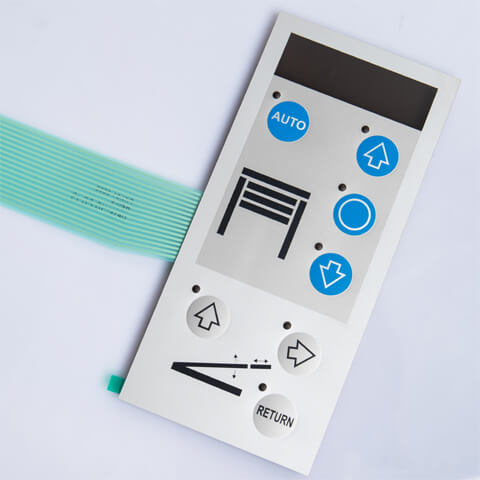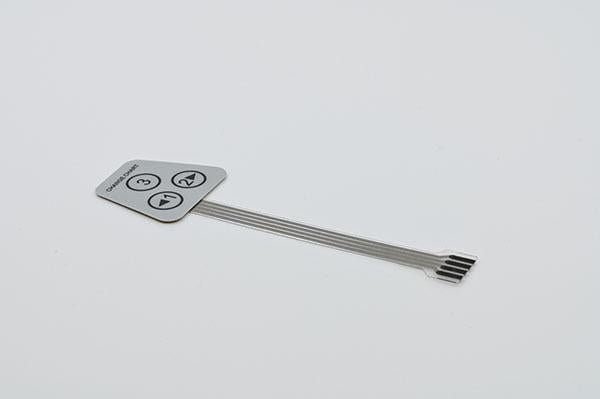Explore Various Types of Membrane Switch Technologies for Your Demands
Explore Various Types of Membrane Switch Technologies for Your Demands
Blog Article
Comprehending the Functionality of Membrane Switches Over for Individual User Interface Gadget
The performance of membrane switches over stands for a considerable innovation in user interface design, combining efficiency with aesthetic flexibility. As industries increasingly focus on customer experience, understanding the subtleties of membrane button innovation becomes essential.
What Are Membrane Layer Buttons?
Membrane switches are innovative interface devices that promote user communication with digital equipment. These functional parts include several layers, including a graphic overlay, spacer, and a published circuit layer. The style permits for a smooth assimilation right into numerous electronic gadgets, boosting both the visual and practical aspects of interface.
Membrane buttons are frequently employed in a wide variety of applications, from house appliances to commercial equipment and medical devices. Their building and construction normally includes a thin account, making them an ideal selection for small layouts. The tactile responses provided by these buttons can be crafted to meet details individual preferences, ensuring reliable communication between the user and the tool.
Durability is one more significant advantage of membrane layer buttons, as they are resistant to dust, dampness, and chemicals, which improves their life expectancy popular atmospheres. In addition, these switches can be tailored in terms of shape, size, and graphic design, enabling branding and user-specific functions. Generally, membrane layer changes stand for a practical remedy for boosting individual experience in electronic tools, combining capability with aesthetic charm in an efficient fashion.
Just How Membrane Layer Switches Over Work
Operating on a simple concept, membrane layer switches over utilize a layered building and construction to register individual input efficiently. Each switch contains numerous layers, consisting of a printed circuit layer, a spacer layer, and a top graphic layer, which are created to function with each other flawlessly. When a user presses the top layer, it compresses the spacer layer, bringing the conductive components of the circuit layer into contact with each other.
This get in touch with creates a shut circuit, indicating the device to perform a specific function. The layout enables different configurations, consisting of responsive responses, which can enhance the individual experience by providing a physical feeling upon activation. The materials used in membrane switches often consist of adaptable substratums, such as polyester or polycarbonate, which make sure longevity and durability versus deterioration.

Secret Advantages of Membrane Layer Switches

An additional substantial advantage is their density. Membrane switches are slim and lightweight, which enables producers to save space in their gadgets without giving up capability. This feature is particularly beneficial in applications where weight and volume are important factors to consider.
Furthermore, membrane layer buttons are resistant to dust, dampness, and chemicals, improving their longevity. This durability prolongs their life-span and lowers the demand for frequent replacements, resulting in expense savings in click over here now time.
Moreover, the responsive comments provided by membrane layer buttons can be enhanced to improve user interaction. They can consist of features such as elevated buttons or audible clicks, improving use and user experience.
Applications Across Industries
Interface devices utilizing membrane layer buttons are prevalent in a vast selection of sectors, showcasing their versatility and capability. Membrane Switch. In the medical industry, membrane switches are integral to tools such as analysis devices and individual tracking systems, where their sturdiness and ease of cleaning are crucial for keeping hygiene requirements. In a similar way, in the automotive industry, these buttons are utilized in dashboard controls and infomercial systems, supplying a streamlined and modern interface for individuals.
Furthermore, the customer electronics industry take advantage of membrane switches in appliances and portable gadgets, where portable style and straightforward interfaces boost user experience. Industrial applications likewise take advantage of membrane switches over for control board in machinery and automation systems, stressing their toughness and resistance to harsh settings.
In the aerospace and defense markets, membrane buttons are used in cabin controls and devices, where dependability and performance under extreme problems are extremely important. In addition, the video gaming industry increasingly incorporates membrane layer buttons in controllers and gallery equipments, adding to an interesting customer experience. Overall, the versatility of membrane layer changes enables their extensive use across various industries, highlighting their significance in contemporary interface style.
Future Fads in Membrane Layer Change Technology

Additionally, using innovative products, such as polycarbonate and polyester movies, is expected to climb, providing enhanced durability and resistance to ecological stressors. These products add to the general longevity of membrane layer buttons, making them appropriate for harsher commercial applications.
Additionally, the incorporation of clever innovation, including IoT connectivity, will certainly allow membrane buttons to interact with other tools and systems, facilitating hop over to these guys a more interactive user experience. This fad aligns with the expanding need for smart gadgets across numerous markets, from healthcare to consumer electronic devices.
Last but not least, modification options are prepared for to increase, allowing producers to create bespoke remedies customized to specific individual requirements and preferences. These growths will certainly place membrane buttons as crucial parts in the development of interface innovation.
Conclusion
In conclusion, membrane layer switches over stand for an essential improvement in user interface technology, supplying a dependable and flexible option for varied digital applications. As advancements in material scientific research and touch noticing innovations proceed, the functionality and applicability of membrane switches are anticipated to increase, enhancing their importance in modern-day digital devices.
Report this page